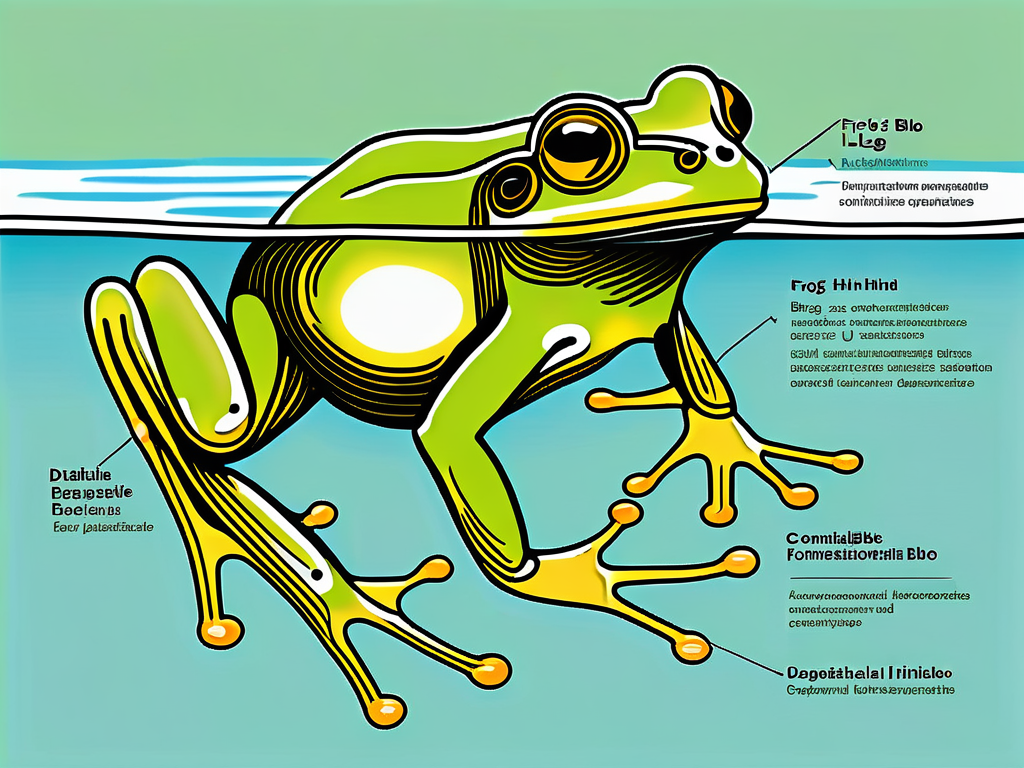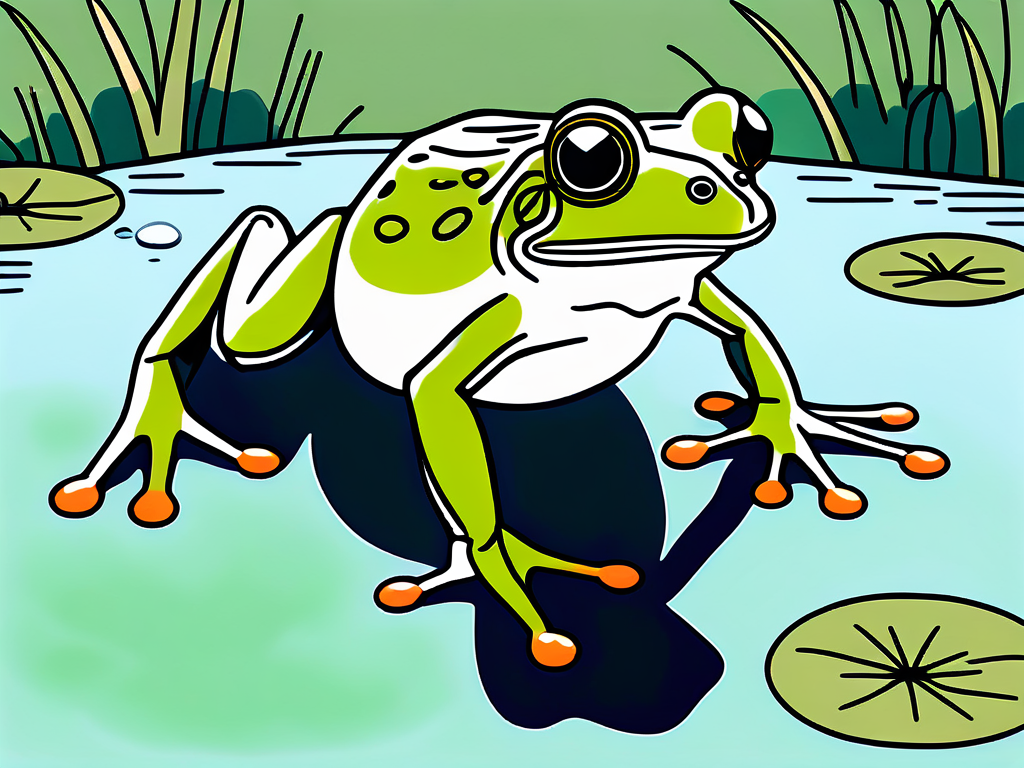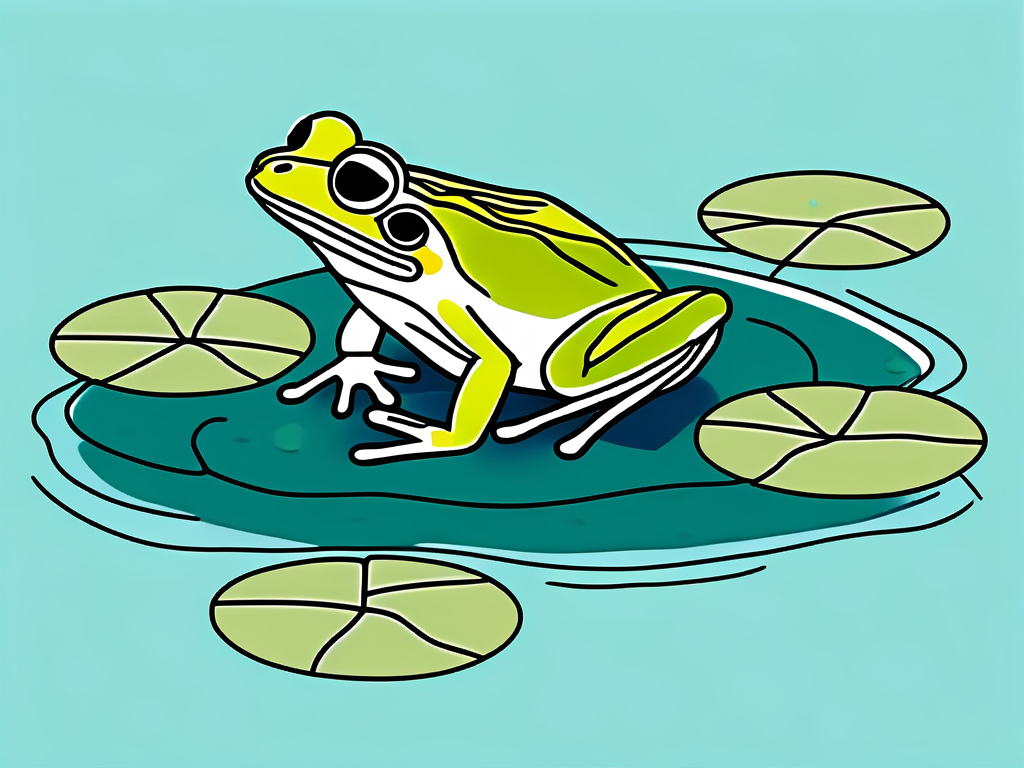Welcome to the ultimate guide to frog butts! If you've ever found yourself pondering the mysteries of amphibian anatomy, you've come to the right place. From the unique features of a frog's rear end to its importance in biology, we'll cover it all. Get ready to dive into the fascinating world of frog posteriors!
Understanding Frog Anatomy
The Role of a Frog's Butt in Its Biology
Let's kick things off by delving into the intriguing role that a frog's butt plays in its overall biology. While it may seem like just another body part, the posterior region of a frog serves several important functions. One of the key roles of a frog's butt is waste elimination. Similar to humans, frogs excrete waste through their rear ends. This process helps maintain their internal balance and keeps them healthy.
In addition to waste elimination, a frog's butt also plays a crucial role in respiration. Frogs have permeable skin that allows them to absorb oxygen and release carbon dioxide through their skin, including the skin around their hindquarters. This means that a frog's butt is not just for sitting – it's also a vital part of their respiratory system.
Unique Features of a Frog's Butt
Now, let's get into the nitty-gritty of what makes a frog's posterior truly unique. Unlike most animals, frogs have a cloaca, which is a single opening that serves as an exit point for both waste and reproduction. Yes, you heard that right – frogs have a multi-purpose behind! How's that for efficiency?
Another fascinating feature of a frog's butt is the presence of mucous glands. These glands secrete a slippery substance that helps keep the frog's skin moist and protected. The mucous also plays a role in thermoregulation, as it can help frogs stay cool in hot weather by providing a layer of insulation on their skin.
Common Questions About Frog Butts
Why Do Frogs Have Butts?
Excellent question! Frogs have butts for the same reason that we do – to expel waste from their bodies. Their butts play a vital role in maintaining the delicate balance of their internal systems. So, the next time you spot a frog hopping around, know that its derriere is hard at work!
Furthermore, a frog's butt also aids in thermoregulation. As cold-blooded creatures, frogs rely on external sources of heat to regulate their body temperature. Their buttocks, with their thin skin and rich blood supply, help absorb warmth from the environment, allowing the frog to stay cozy and active.
What Functions Does a Frog's Butt Serve?
Aside from waste elimination, a frog's butt serves another important function – reproduction. The cloaca, located in their rear end, allows for the transfer of eggs and sperm during the mating process. It's a truly versatile organ!
Moreover, a frog's butt can also act as a defense mechanism. Some frog species secrete toxins through their skin, and the area around their cloaca can be a prime location for releasing these chemicals when threatened. This unique adaptation helps ward off predators and keep the frog safe in its natural habitat.
Misconceptions About Frog Butts
Debunking Frog Butt Myths
Now, let's address some common misconceptions surrounding frog butts. One myth suggests that frogs can only use their rear end for hopping, but that's simply not true! While their strong hind legs are primarily responsible for their impressive jumps, their butts mainly handle the business end of things.
Another interesting fact about frog butts is that they play a crucial role in communication. Frogs have scent glands located in their hindquarters that release pheromones, allowing them to mark their territory and attract potential mates. So, next time you see a frog lifting its rear end in the air, it might not be just for a hop!
Facts Versus Fiction: Frog Butts
It's time to separate fact from fiction when it comes to frog butts. Contrary to popular belief, a frog's posterior is not slimy to the touch. In fact, it's covered in a protective layer of skin that helps keep it clean and dry. So, the next time you encounter a frog, don't be afraid to give its rump a gentle pat!
Additionally, frog butts are not just for sitting. These versatile creatures use their hindquarters for a variety of functions, including absorbing water through their skin. This process, known as cutaneous water absorption, allows frogs to stay hydrated in arid environments where water sources may be scarce. So, the next time you see a frog perched on a rock, remember that its butt is helping it stay quenched!
The Science Behind Frog Butts
The Biological Importance of Frog Butts
Now, let's explore the scientific significance of frog butts. Beyond waste elimination and reproduction, a frog's posterior plays a crucial role in regulating its body temperature. By absorbing and releasing heat through their skin, frogs can maintain an optimal internal temperature. It's an ingenious natural cooling system!

In addition to temperature regulation, a frog's butt also serves as a vital communication tool. Certain species of frogs have unique color patterns or markings on their hindquarters that they use to signal warnings or attract potential mates. These visual cues play a significant role in their social interactions and survival in the wild.
Frog Butts and Their Impact on Frog Health
Believe it or not, the health of a frog's butt can provide valuable insights into its overall well-being. Any abnormalities or changes in color, texture, or behavior around the posterior region may indicate underlying health issues. So, next time you're observing frogs, keep an eye out for any signs of rear-end irregularities!
Furthermore, the microbial community living on a frog's skin, including its butt, is essential for maintaining the frog's health. These microorganisms help protect the frog from harmful pathogens, aid in digestion, and even produce antimicrobial substances that ward off infections. The delicate balance of this skin microbiome is crucial for the frog's immune system and overall well-being.
Frog Butts in Different Species
Comparing Frog Butts Across Species
As with any species, frog butts can vary across different types of frogs. From the diminutive tree frogs to the mighty bullfrogs, each species boasts its own unique butt characteristics. Some frogs may have more pronounced hindquarters, while others have specialized adaptations for specific environments. It's truly a diverse world of frog behinds!
When it comes to frog butts, the diversity doesn't stop at just size and shape. The colors and patterns on a frog's posterior can also vary greatly between species. For instance, the red-eyed tree frog sports a vibrant green body with bright red eyes, but its butt is a contrasting blue and yellow. This coloration serves as a warning to predators, signaling the frog's toxicity and deterring potential threats.
Unique Frog Butt Characteristics in Various Species
Did you know that certain frogs have specialized adaptations in their butts? Take the spadefoot toad, for example. Its posterior features a specialized digging pad that helps it burrow into the ground with ease. Talk about versatility! Nature never ceases to amaze us with its creativity.
Another fascinating example of unique frog butt characteristics can be found in the waxy monkey frog. This species secretes a waxy substance from glands in its skin, giving its butt a glossy appearance. The waxy coating not only helps the frog retain moisture in arid environments but also acts as a defense mechanism against predators by making the frog slippery and hard to grasp.
Frog Butts and Environmental Impact
How Frog Butts Contribute to Ecosystems
Frog butts aren't just interesting from a scientific standpoint – they also play a crucial role in maintaining healthy ecosystems. Frogs, through their waste elimination, provide vital nutrients to the surrounding environment. Their poop acts as a natural fertilizer, enriching the soil and promoting the growth of plants. So, next time you encounter a frog butt, remember that it's contributing to a thriving ecosystem!

Furthermore, the presence of frogs in an ecosystem can also indicate the overall health of the environment. As sensitive amphibians, frogs are greatly affected by changes in water quality and habitat degradation. By monitoring frog populations and the condition of their butts, scientists can gain valuable insights into the state of the ecosystem and potential environmental threats.
The Effect of Climate Change on Frog Butts
In the face of climate change, frog butts may be facing new challenges. As temperatures rise and habitats change, frogs must adapt to survive. The health and functionality of their rear ends could be affected, potentially impacting their overall well-being. It's a stark reminder of how interconnected our planet is and the importance of preserving frog habitats.
Additionally, the impact of climate change on frog butts extends beyond their immediate well-being. Changes in frog populations can have cascading effects on entire ecosystems. For example, a decline in frog numbers could lead to an increase in insect populations, disrupting the delicate balance of the food chain. Understanding and mitigating the effects of climate change on frog butts is essential for maintaining biodiversity and ecosystem stability.
Conclusion
There you have it – a comprehensive guide to all things frog butts! We've explored the unique biology, debunked myths, celebrated their diversity across species, and even touched on their environmental impact. Now, armed with this newfound knowledge, you can impress your friends with fascinating frog butt facts at your next gathering. Remember, the world of butts is not limited to humans alone – let's give frog butts the recognition they deserve!

Bake Your Own Frog Butt-Inspired Treats!
Now that you're an expert on frog butts, why not celebrate your knowledge with some delightful baking? BakeMeMate specializes in creating fun cookie cutters for every occasion, including the whimsical world of animal behinds! If you're feeling inspired by our amphibian friends, check out our Frog Butt Cookie Cutters and imagine the ribbiting possibilities. We love custom designs, so if you're craving a froggy touch, let's collaborate to make the perfect cookie cutter come to life. Hop to it and bake some memories with BakeMeMate!

